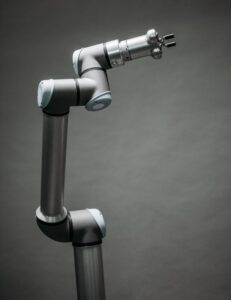
Robotics and automation are revolutionizing the working world, offering opportunities and challenges for both the workers and the companies. In this article, we’ll be exploring how these technologies are influencing the way we’re working and how they can be used to the benefit of the personnel.
Robotics and automation: a new scenario
The advent of the 4.0 Industry has brought a series of technological innovations along with it, such as advanced robotics, artificial intelligence and automation. These cyber-physical systems (CPS) interact with physical processes and can be applied to various productive sectors.
Automatize to compete
The automation of company procedures offers numerous advantages, such as an increase in efficiency, the reduction of human error and the ability to manage repetitive tasks. In a world in which global competition is becoming more and more cut-throat, businesses have to adopt innovative strategies to stay competitive.
Robotized procedures vs Asian competition
Our companies often go through difficult challenges when faced with competitors, usually based in Asia, that, by taking advantage of regulations which are much laxer than European ones, offer glaringly lower prices.
More often than not, though, big multinationals are complicit in this situation because, even though they wave the flag of social, political and environmental respect, requiring European industries to comply to their standards, they end up acquiring services in the places where these values are undermined most, with the interest in lower costs prevailing.
Thus, in the mechanical sector, the balance between robotized procedures and the challenge of Asian competition is of fundamental importance.
Let’s examine how automation can influence the competitiveness of mechanical businesses in opposition to the unfair competition from Asia.
Operative efficiency: the automation of industrial processes, robotic arms included, improves efficiency. These devices can handle repetitive tasks faster compared to human operators, decreasing logistic times and increasing productivity.
Production costs: automation lowers production costs. Robotic arms can work relentlessly, without getting tired, and can handle heavy weights. This allows the company to maintain competitive prices without compromising quality.
Product quality: automation reduces human error and improves coherency throughout the production. Mechanical components created by automatized machines tend to have more uniform quality.
Innovation and customisation: automation frees up human resources for more creative and innovative tasks. Mechanical industries can focus on the engineering of new products and improve the customisation, to better satisfy each client’s specific needs.
Reaction time: while an automated company can react rapidly thanks to its technology, an Asian competitor could have an advantage in terms of flexibility and adaptability. Automation, however, offers a significant advantage in terms of efficiency and operative costs, that could result, in the long run, in a higher reaction speed.
How to evolve: robotized processes
Strategic analysis: businesses must conduct an in-depth analysis of their processes. It is fundamental to identify inefficient areas and repetitive tasks. This allows us to pinpoint which procedures can be automatized.
Automation Coach: collaborating with automation experts is essential. A “coach” can guide the company through the process of choosing technologies and implementing robotized solutions. This helps to maximise economic return on the investment.
Continued automation: automation is not a short-term project. Companies must adopt a steady approach, constantly monitoring procedures and bringing upgrades. The goal is to optimise efficiency and reduce costs in time.
Conclusions
Automation is not just an answer to Asian competition, but also a way to create a long-lasting competitive advantage. Companies which invest in robotized processes are able to evolve, grow and prosper on the global market.